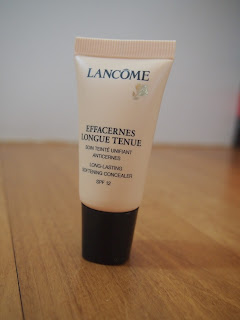Yes, a natural product like honey is
actually a superb acne fighter! I’ve tried this myself and all I can say is… IT
BLOODY WORKS!
Honey is soothing, moisturizing and has
natural antibacterial properties. Instead of regular honey, you can also
consider Manuka honey (think of it as a
super honey). Whichever you decide to get, I’d recommend choosing one that
is raw and unpasteurised as this ensures that the honey is not heated above a
certain temperature and thus maintains all its original goody goodness.
Manuka honey is obtained from the nectar
collected by bees that feed on manuka trees. This type of honey has natural
antibacterial, antimicrobial, antiseptic, antiviral, antioxidant,
anti-inflammatory and antifungal properties (Whew! What a sentence!). Manuka honey’s antibacterial activity is
due mainly to hydrogen peroxide gradually being released by the enzyme glucose
oxidase. Whilst most honeys naturally contain this peroxide activity, Manuka
honey also has a unique antimicrobial activity known as non-peroxide activity.
When purchasing Manuka honey, it is also
important to note the UMF (Unique Manuka Factor) or NPA (Non Peroxide Activity,
but this is less commonly used)
rating. These ratings measure the level of antibacterial activity in Manuka
honey; the higher the number, the greater the antibacterial activity. To fight
acne, look out for a UMF or NPA rating of between 10 to 18.
From my observation, there are Manuka
honeys with UMF ratings as high as 25 but I think this is overkill. Not only
will it burn a huge painful hole in your wallet, Manuka honeys with such high
ratings also increase the potential for it to irritate your skin. (I also read that some sellers may add
antibiotics to the honey to boost the UMF rating artificially! So past a
certain UMF I don’t trust it)
 |
| You can find this at certain Unity Pharmacies in Singapore |
This is the honey I use and I’m very happy
with it. You can see from the label that the honey is ‘Active 15%’. I know it
doesn’t have a UMF rating but it works. Also, it’s the only Manuka honey I came
across thus far that is labelled raw, unpasteurized and organic. The label also
states that the honey is extracted at room temperature, so no high heat
involved, wonderful!

How
to use?
Face cleanser – Simply dampen your face
with water, scoop out a chunk of honey and
massage it around. Once
you’re done, rinse off. (Note: not a good makeup remover
so use a separate one)
so use a separate one)
Mask – On a clean face, spread the honey
evenly onto your skin and leave for as long
as you want. Rinse off when done. (Honey is most effective for acne fighting
when it is left in contact
on your skin for as long as possible. Try to use it for
at least day and night for
10 mins each time)
Moisturizer - Mix the honey with an aloe vera gel or your moisturizer and apply it as you would a
normal moisturizer. (Surprisingly when I did it like this, it really helped to keep even
cystic acne at bay after the initial purge but does not get rid or prevent clogged pores)
Using manuka honey as a mask or in my moisturizer gave me clear
skin after about 2 months of daily use. This is
a treatment that works in the long term, and yet does not have side effects! I prefer mixing it in my moisturizer though as using it as a mask every morning and night for 10 min can be a hassle after some time.
Be warned though that honey will cause purging so your acne will probably get worse before it gets better.
Be warned though that honey will cause purging so your acne will probably get worse before it gets better.
Pros:
- It does work to fight and prevent acne
- Gentle on the skin and won't harm or disrupt your natural acid mantle, so no side effects.
- Moisturizing
- Can be used as a spot treatment for painful pimples
- One jar of honey can last a loooonngg time so if you work it out it's cheap
- Is completely natural with no harmful chemicals or toxins!
Cons:
- Takes a long time (can be several months) before you see the final effects, patience is key.
- Messy and may attract ants
- Does not remove makeup when used as a cleanser
- Will most likely cause purging. All the underlying pimples/blackheads/whiteheads you never knew you had are gonna rear their ugly heads. This is definitely a treatment where it will get worse before it gets better. Duration and extent of purging depends on how bad your skin condition is.
This is not a treatment for the weak hearted!
Hope you found this useful!
Sweet dreams,
PockMarkFats
Sources:


















